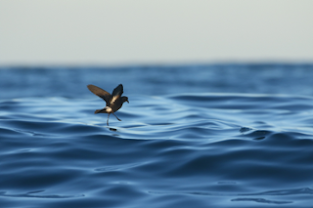Gangoso, L., Cortés-Avizanda, A., et al. 2021. Avian scavengers living in anthropized landscapes have shorter telomeres and higher levels of glucocorticoid hormones. Science of the Total Environment.146920, https://doi.org/10.1016/j.scitotenv.2021.146920
Abstract: Habitat anthropization is a powerful stressor affecting the health and
fitness of organisms, ultimately impacting their population dynamics. In
vertebrates, stressful living conditions are usually associated with
elevated glucocorticoids-based responses (GCs) as well as shorter
telomeres, which are in turn associated with decreased overall body
condition fitness and life expectancy. However, our understanding of how
habitat anthropization per se and population processes
synergistically, or independently, may affect GCs and telomere dynamics
in natural populations is still very limited.
Here, we assessed the
physiological footprint of habitat anthropization and conspecific
density in 65 GPS-tagged Eurasian griffon vultures (
Gyps fulvus)
from two populations of the Iberian Peninsula. We examined how
extrinsic (human footprint values and conspecifics density within
individual activity areas) and intrinsic (sex and home range size)
factors determine GCs deposited in feathers (CORT
f) and
telomere length as proxies of overall individual condition and quality.
We found strong differences in both physiological markers between
populations, with higher CORT
f levels and shorter telomeres
in vultures living in the northern, more anthropized area. We also found
sex-specific patterns of CORT
f, with females having higher
levels than males. In both sexes, telomere length decreased as the
density of conspecifics increased. Previous studies in these populations
have shown lower survival rates in individuals who exploit more
anthropized areas, and here we show a potential physiological causal
link. We highlight the existence of complex effects of chronic stress
associated both with living in anthropized environments and with
population-related processes likely associated to the spatial
distribution of resources.







